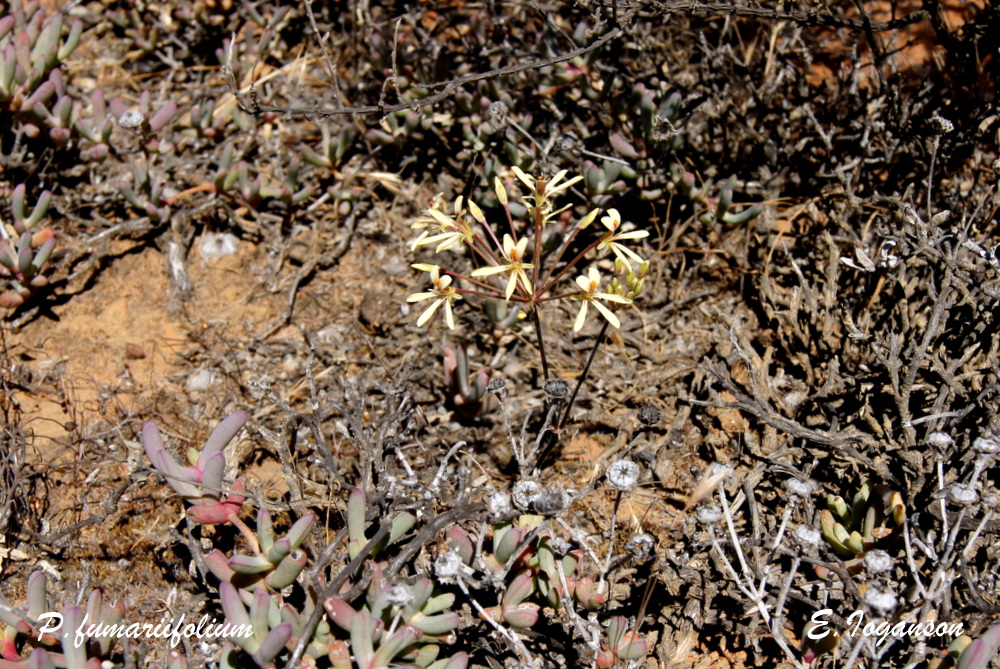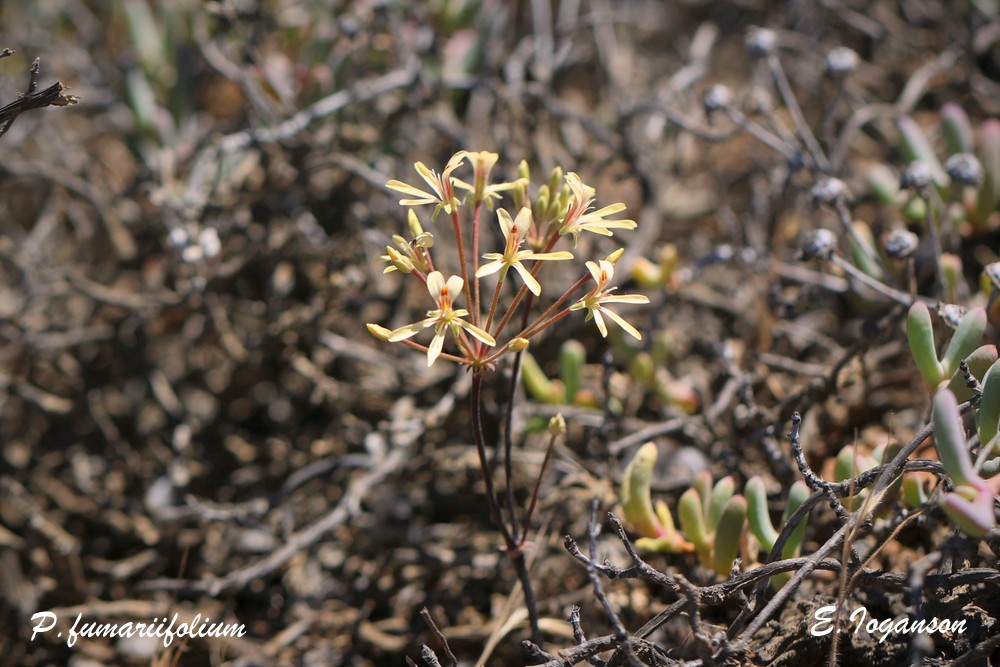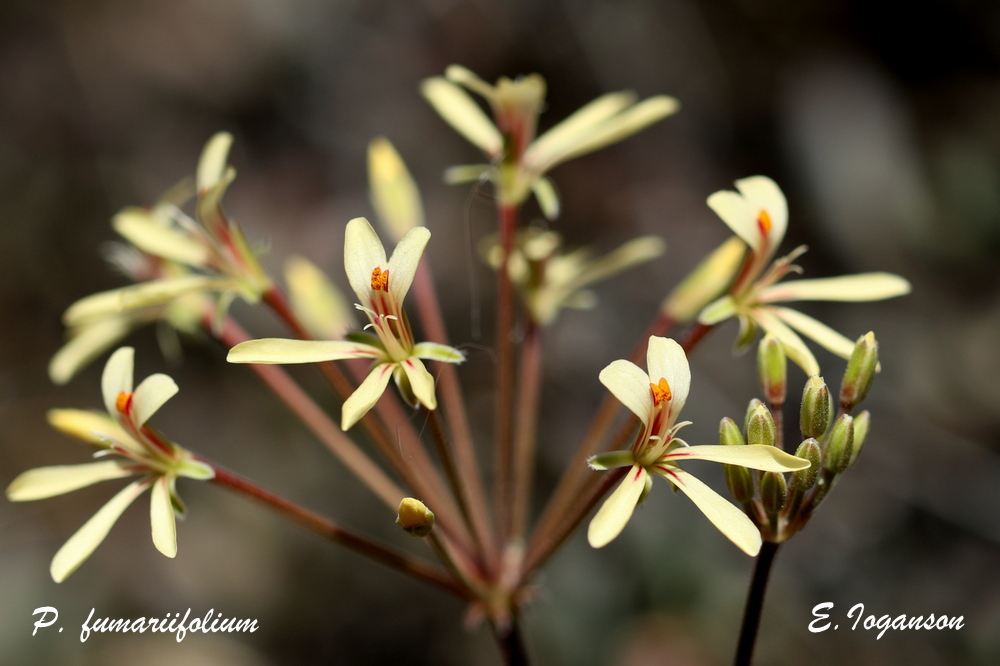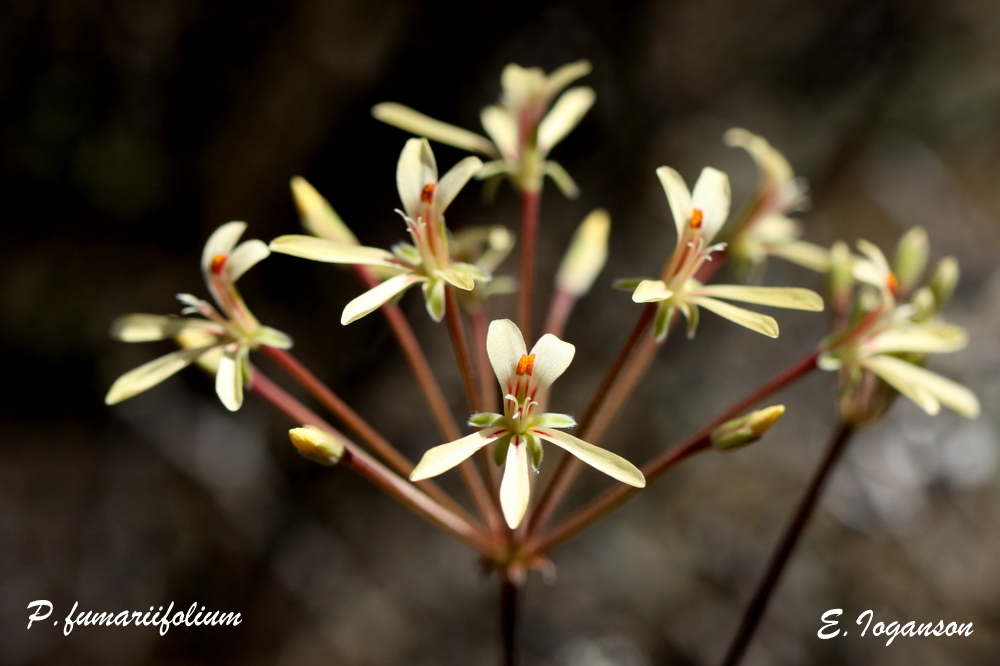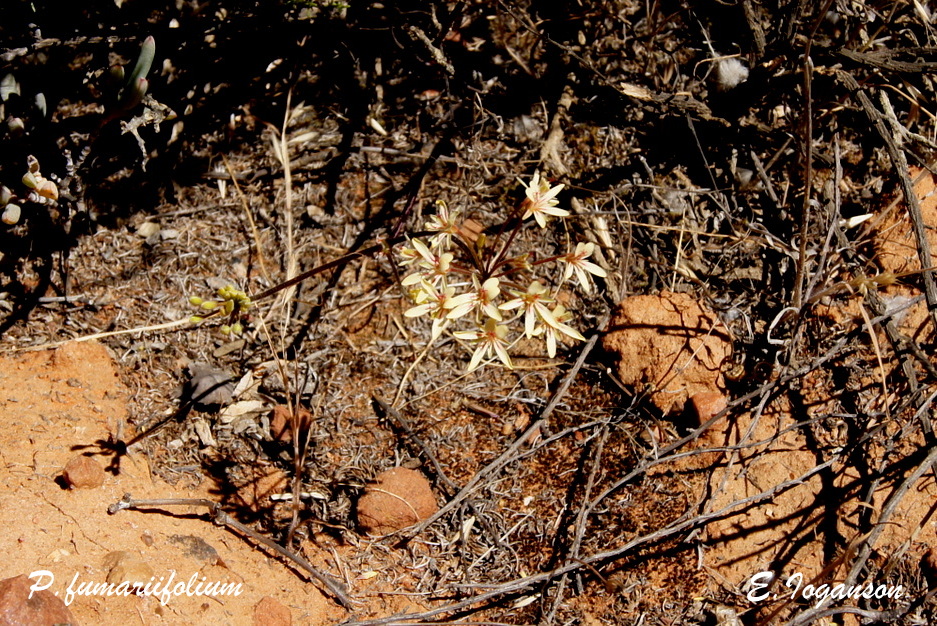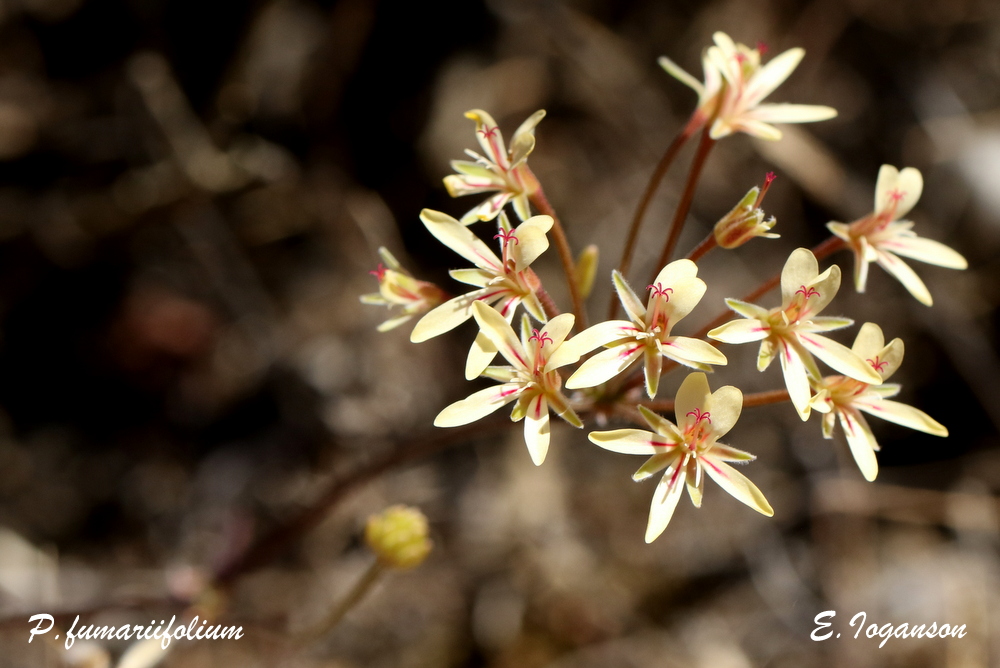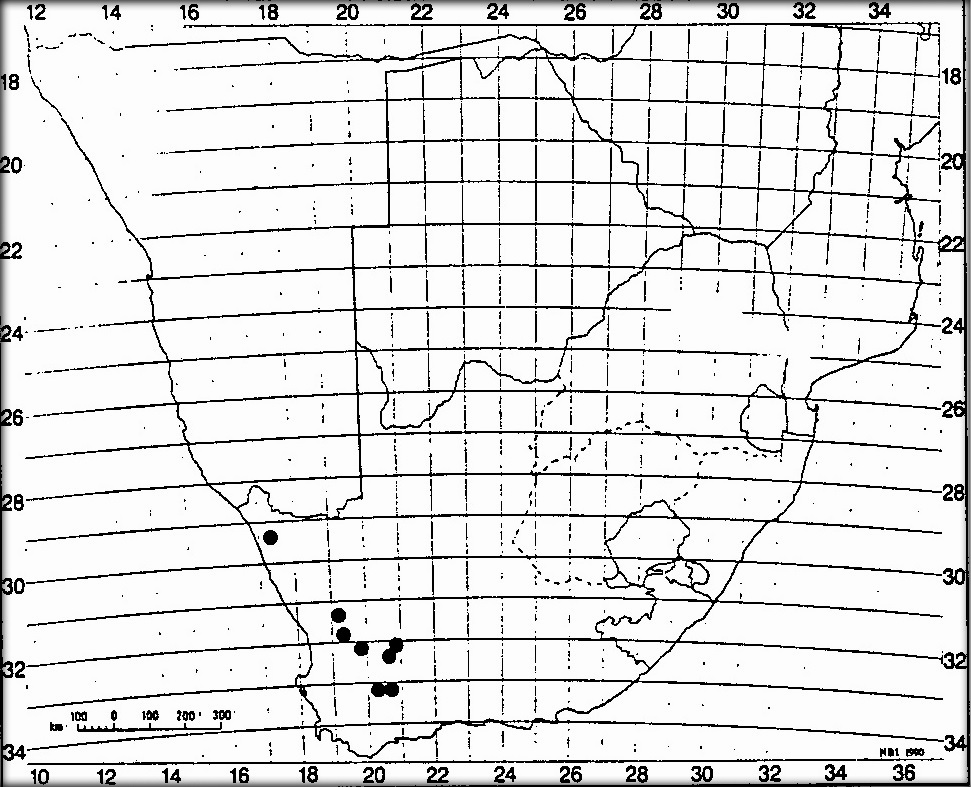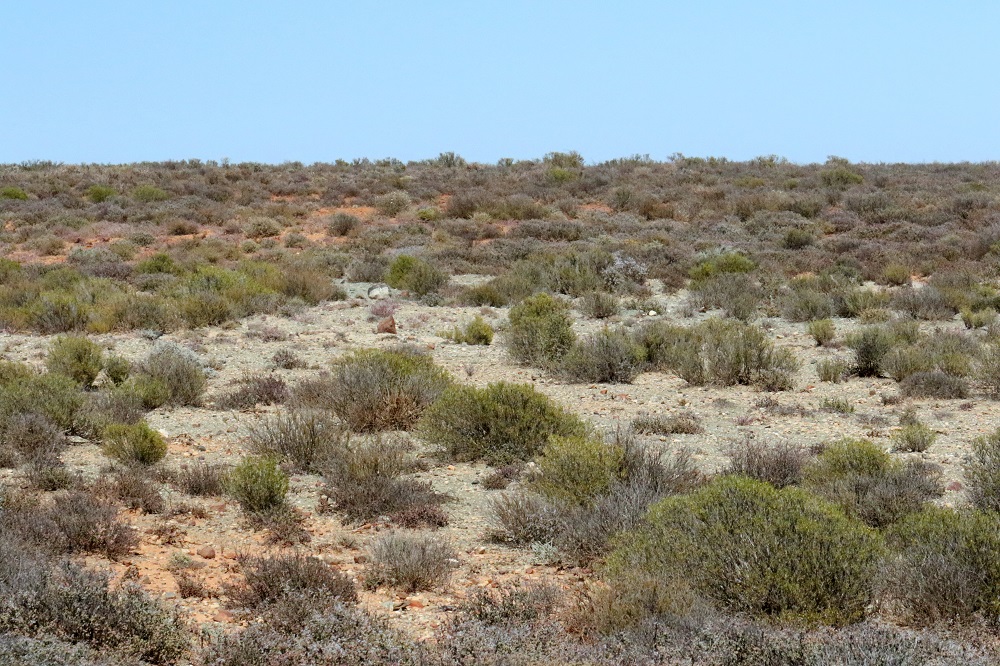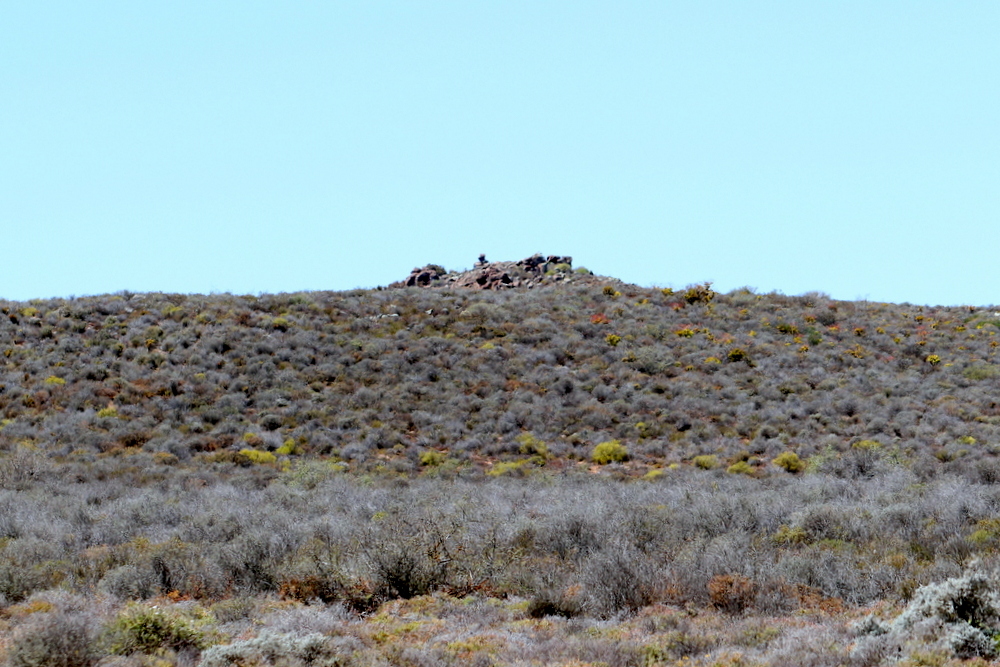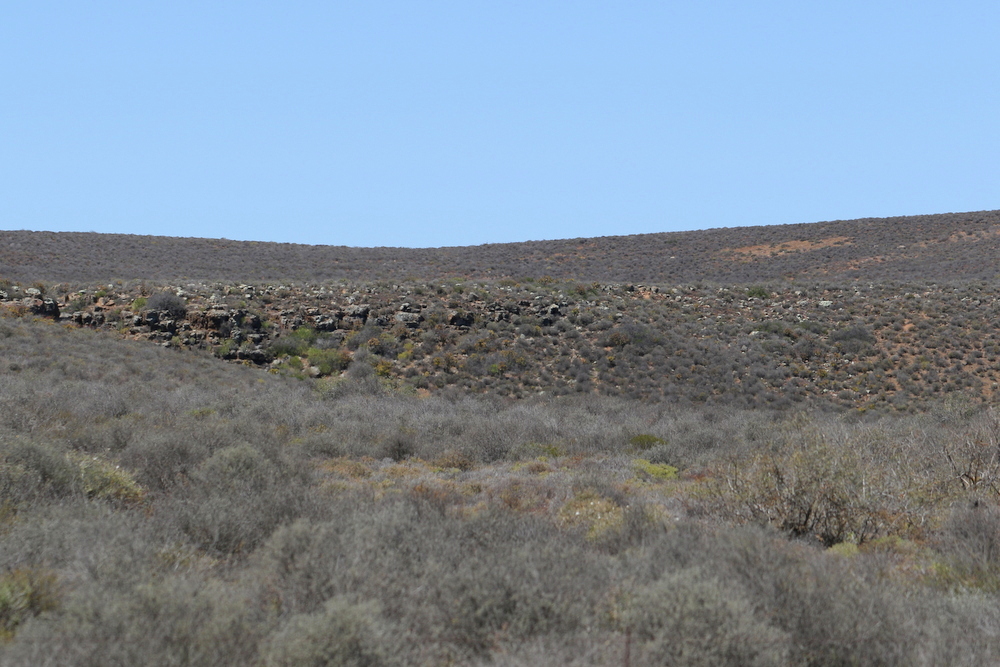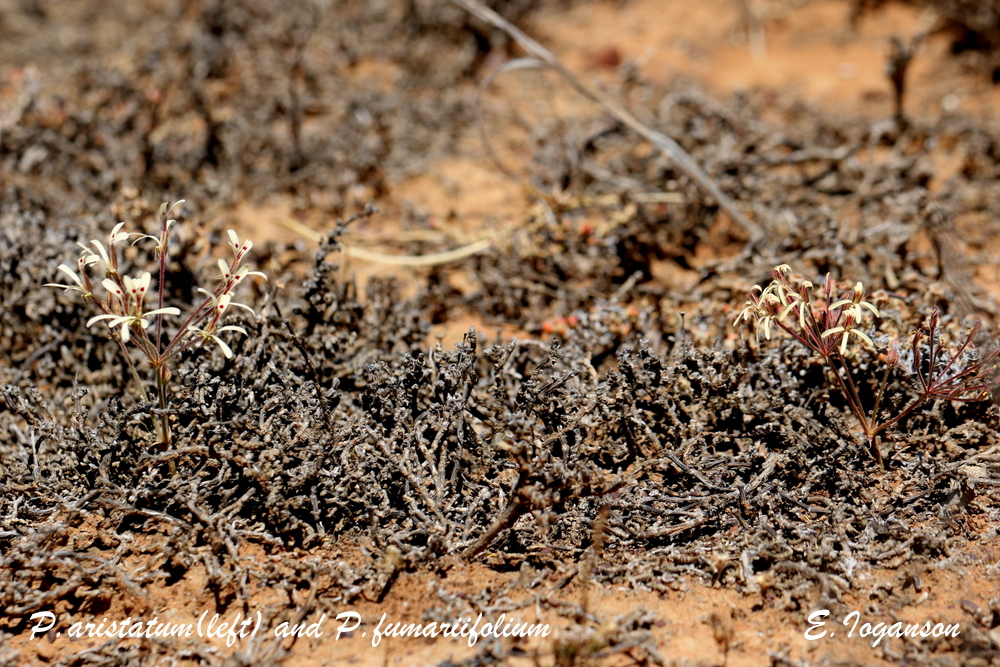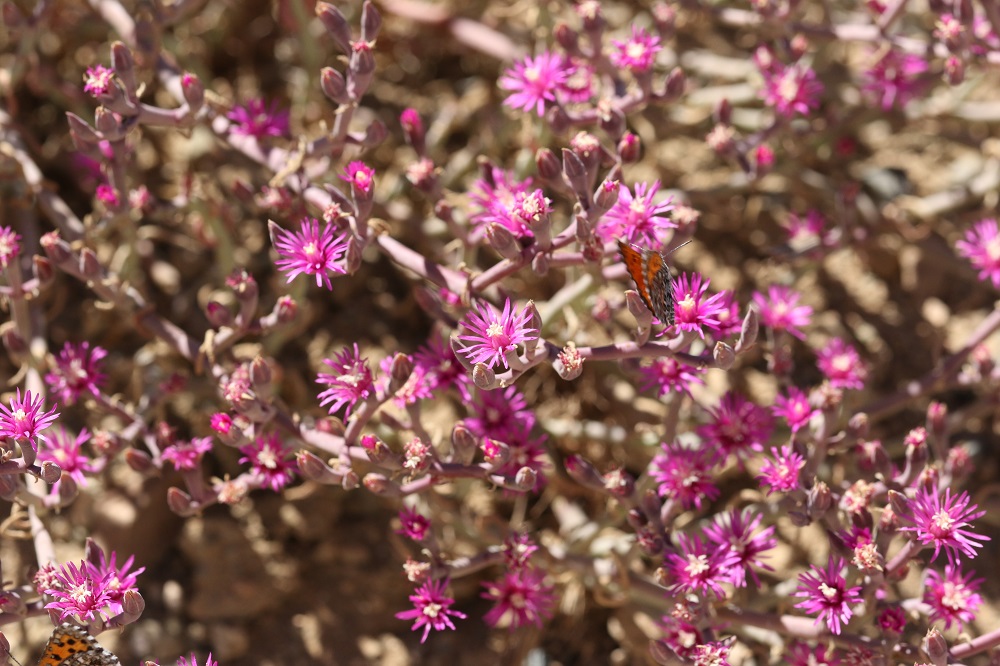P. fumariifolium
РусскийPelargonium fumariifolium R. Knuth, Planzenreich 4, 129: 347 (1912)
genus: Pelargonium L'Héritier
subgenus: Pelargonium L'Héritier
section: Hoarea (Sweet) De Candolle
The epithet fumariifolium refers to the leaves of Fumaria of the Fumarioideae, plants with much-divided leaves.
A geophyte 80–230 mm tall when in flower. Tuber: a turnip-shaped or elongated, sometimes moniliform root 15–60 mmlong and 15–30 mm in diameter. Leaves: green, petiolate; lamina trulate in outline, pinnate to bipinnatisect with 3 or 5 pinnae, 70-130 x 70–140 mm; pinnae 40–90 mm long, lobed to laciniate, adaxially and ab axially hirsute with appressed hairs interspersed with very short glandular hairs; petiole 60–80 mm long and 1–2 mm in diameter, rigid, erecto-patent, densely hirsute with short appressed hairs; stipules subulate, adnate to petioles for half their length, 8–9 mm long and 1–2 mm wide, hirsute. Inflorescence: scape 20–150 mm long, 1–3 mm in diameter, branched, bearing 2–6 pseudo-umbellets with (8-)14–23 flowers each; peduncles 20--90 mm long, 1–2 mm in diameter, dark reddish brown, sparsely hirsute with appressed hairs interspersed with short glandular hairs; bracts lanceolate, 2–3 mm long, 1 mm wide, reclinate, abaxially densely hirsute with appressed hairs. Pedicel: ca. 0,5 mm long. Hypanthium: 24–35 mm long, pale green, indumentum as on peduncle. Sepals: 5, lanceolate, apices acute, 4–6 mm long, 1–2 mm wide, patent during anthesis, pale green with membranous margins, abaxially densely hirsute with appressed hairs, interspersed with glandular hairs. Petals: 5, pale yellow, patent during anthesis; posterior two with pale pink V-shaped markings, ligulate to spathulate, bases cuneate, apices rounded or emarginate, recurved, 8–10 x 2–3 mm; anterior three with a single dark pink stripe on each, spathulate, bases attenuate, apices rounded, recurved, 9,5–13 x 2–3 mm. Stamens: staminal column 1–1,5 mm long, white; perfect stamens 2, in lateral position, 4--6 mm long, protruding from the flower, free filaments white, twisted so that pollen surfaces of the anthers are turned to the front; posterior staminodes 1,5–2 mm long, anterior five staminodes 4–6 mm long, protruding from the flower; anthers dark pink, 1–1,5 mm long, pollen yellow. Gynoecium: ovary 2–4 mm long; style 1–3 mm long, pink; stigma branches 1 mm long, adaxially dark pink. Fruit: bases of mericarps 4 mm long, with glandular hairs, tails ca. 24 mm long.
Diagnostic features and affinities
The androecium of P. fumariifolium is unique for the genus. The flower has only two fertile stamens which are in the lateral position. The filaments of these two stamens are twisted so that the pollen surfaces are facing to the front as in P. luteum and P. caroli-henrici. The posterior staminodes are short (1,5–2 mm), but the five anterior ones are long (4–6 mm) and protrude from the flower. These long staminodes are unique for Pelargonium, because staminodes usually are short and concealed within the floral sheath.
P. fumariifolium is closely related to P. luteum because of the similarities in the form of the petals and the way the anthers are borne during anthesis. The pseudo-umbellets of both species have a very delicate appearance. The two species differ in leaf form, the indumentum of the scape, the hypanthium and the sepals as well as the number of fertile stamens. P. fumariifolium usually has more flowers per pseudo-umbellet than P. luteum.
P. fumariifolium in habitat. Calvinia area, Northern Cape, South Africa. Photos by E. Ioganson
Geographical distribution and ecology
Although P. fumariifolium has a wide distribution area, only a few collections are known. This may possibly be because plants usually occur in small populations and are difficult to find. It occurs from Kaus Mountains in Namaqualand in the north to Ceres-Karoo in the south and Whitehill in the east, an area with an annual rainfall of 100–300 mm, occurring mainly in winter. Plants grow in rocky areas in sandy soil or in ompacted clayey sand, in renosterveld or karroid vegetation.
P. fumariifolium flowers from late October to November after the leaves have died.
Distribution of P. fumariifolium

P. fumariifolium grows in a low hilly area dominated the shrubs, majority of that less than 0.5 m high, with succulent leaves and stems. Photo E. Ioganson


References
- Albers, F. 2002. Geraniaceae. In: Eggli, U. (ed.). Illustrated handbook of succulent plants: Dicotyledons. Springer, Berlin, Heidelberg, New York: 241–272.
- Marais, E.M. 1994. Taxonomic studies in Pelargonium, section Hoarea (Geraniaceae), Ph. D. thesis, University of Stellenbosch.

























